A quiet response threatens to cut-off discussion about noose found hanging on Duke Campus
 The initial story took off like a rocket. The discovery of a noose hanging from a tree on a southern university campus. Administrators, faculty and students at Duke University in Durham, North Carolina reacted with a strong collective voice of outrage and disgust. Then the story appeared to fall victim to the quick-attention span news cycle and all but died over the weekend. Granted it was a holiday weekend and the public pronouncements from the Duke community understandably focused on Coach K’s team of freshmen basketball players winning a national championship.
The initial story took off like a rocket. The discovery of a noose hanging from a tree on a southern university campus. Administrators, faculty and students at Duke University in Durham, North Carolina reacted with a strong collective voice of outrage and disgust. Then the story appeared to fall victim to the quick-attention span news cycle and all but died over the weekend. Granted it was a holiday weekend and the public pronouncements from the Duke community understandably focused on Coach K’s team of freshmen basketball players winning a national championship.
But now we are left with the university’s response to the noose. Any just like that yellow rope dangling from a tree, the Duke community and the public are left hanging. What happened? How could this happen? Who is responsible? The university will only say they know who’s responsible, the person is no longer on campus and nothing more.
The university is citing privacy concerns for its close to the vest approach. But does that calm the fears and strengthen the moral outrage that came from such a racially mean act?
I don’t think it is a stretch to assume the university would rather focus attention on basketball (or just about anything else) than the ugly results of an investigation into a hateful act like hanging a noose. Finding a balance can be difficult and often times those who try to work both sides of the street end up getting run over going back and forth.
Our country’s history with regard to race is hard to talk about. Incidents like the one at Duke last week can and should be part of the discussion. The problem is we don’t know enough to for that discussion to take place and in this world of chasing the next shiny object we move past an opportunity and bury the truth.
Changing the way police investigate rape on college campuses
There is a well-documented crisis when it comes to rape on university campuses. A 2015 documentary film by Kirby Dick, Amy Ziering and Amy Herdy, The Hunting Ground, explores the realities of rape on U.S. college campuses. It’s a real problem.
There is also a trem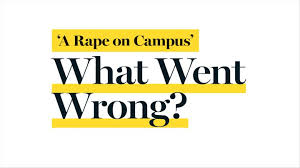 endous amount of pressure on universities to get it right. One of the points pressed by the UVA Rolling Stone article is the university promoted a culture that prevented responsible rape reporting and investigations. That may or may not be true.
endous amount of pressure on universities to get it right. One of the points pressed by the UVA Rolling Stone article is the university promoted a culture that prevented responsible rape reporting and investigations. That may or may not be true.
What is certain in my opinion is law enforcement has a responsibility to investigate and to get it right. That can be extremely difficult in the face of public pressure that’s casting a bright light on the campus rape crisis. But our justice system requires it. It’s fair to the victim and the accused.
A ‘Hail Mary’ play for reasonable doubt

Aaron Hernandez
The fate of former NFL star Aaron Hernandez is with the jury. The prosecution spent months presenting evidence and 132 witnesses trying to show the former New England Patriots player murdered Odin Lloyd. The defense mocked it saying it was full of holes and speculation.
Even with this mountain of evidence, the prosecution case is largely circumstantial. And one point that continues to be pushed as a potentially damaging gap is the lack of a murder weapon. As I detailed in a previous post, this is a non-issue. It’s more of a made of TV distraction than a real courtroom concern.
What’s more important is how the defense carefully and methodically put their spin on the evidence. Courtroom observers say several members of the jury appeared to be paying close attention and perhaps moved by the passionate closing argument of defense attorney James Sultan.
“Did he make all the right decisions? No,” Sultan said during his closing arguments. “He was a 23-year-old kid who witnessed something, a shocking killing, committed by someone he knew. He didn’t know what to do, so he just put one foot in front of the other.”
That’s a bold admission by Sultan that his client witnessed the murder. It’s a high risk move that can cut both ways. By conceding Hernandez was at the crime scene when Lloyd was shot, the defense hopes to gain credibility with the jury in the face of overwhelming evidence. It also opens them up to the Massachusetts “Joint Venture” law. The prosecution spent time explaining to jurors how this law works and connecting it to the case. Hernandez did not need to pull the trigger to be guilty of murder.
When it comes to “Join Venture,” a Boston criminal defense attorney following the trial noted:
Jury will be instructed that a joint venture is proven if the following is proven:
The test [for joint venture] is whether each defendant was (1) present at the scene of the crime, (2) with knowledge that another intends to commit the crime or with intent to commit a crime, and (3) by agreement is willing and available to help the other if necessary.”
The defense did an excellent job of creating a laundry list of “missing” items or unanswered questions that the prosecution failed to address. This includes: the Commonwealth targeted Hernandez, he has no motive to kill Lloyd and the crime scene was not preserved, DNA testing was inadequate and crime scene investigations like the foot print expert were not qualified, those factors could lead the jury to find a reasonable doubt and find Hernandez not guilty.
Since prosecutors have burden of proof, if there’s any “not guilty” leaning jurors, they now have ammo to take into the jury room.
Bottom line: the defense may have done enough to snatch victory from the jaws of defeat.
The Jury has it
Jury deliberations are underway for the accused Boston Marathon bomber, Dzhokhar Tsarnaev. He’s accused of committing the deadliest terror attack on U.S soil since 9/11. A guilty verdict will not surprise anyone. This case has always been about the penalty phase. The defense strategy all along has been to keep their client off death row and alive to spend the rest of his life in prison.
Follow me on Twitter for updates to jury deliberations with Hernandez and Tsarnaev.
- #JourneyAcrossAmerica Update - May 10, 2017
- CNN Interview for my #RunAcrossAmerica - April 21, 2017
- #WhatsMyWin Training and Interview for my #RunAcrossAmerica - April 21, 2017

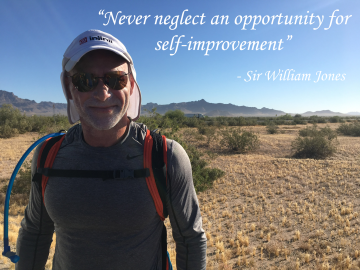
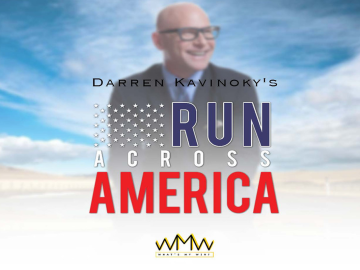
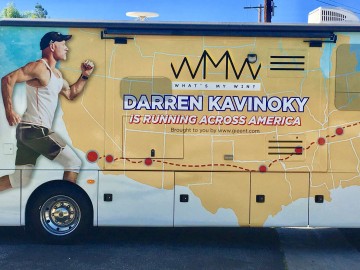
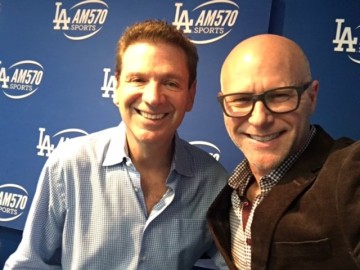
 Darren is an accomplished TV personality, attorney, interventionist, keynote speaker, and 'misbehavior expert' who appears constantly on countless TV and radio shows.
Darren is an accomplished TV personality, attorney, interventionist, keynote speaker, and 'misbehavior expert' who appears constantly on countless TV and radio shows.